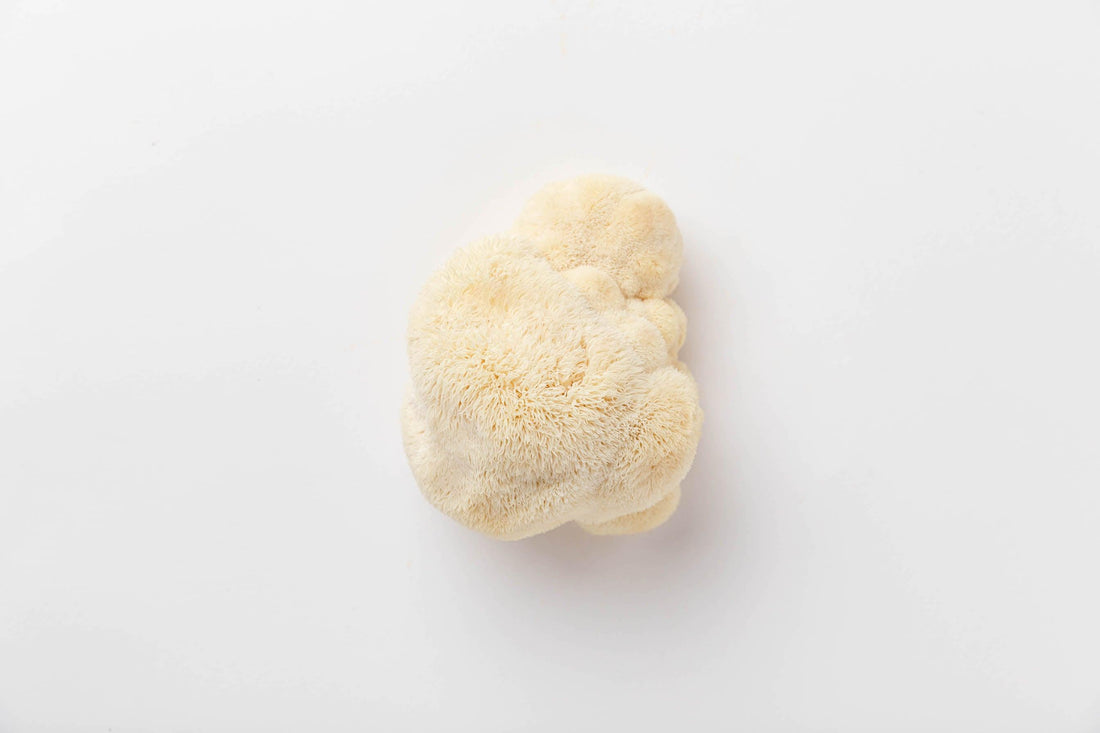Lion’s Mane, taxonomically known as Hericium erinaceus, is both a delicious gourmet and medicinally potent mushroom.
A saprophytic (decomposing) fungus, Lion’s Mane is known as a tooth fungus and typically grows and obtains its nutrients from the dead and decaying wood of trees. It is widely distributed across North America, especially in the southern United States, as well as in Europe, Japan, and China.
Stalking the Lion
To identify Lion’s Mane mushrooms in the wild, here are some general morphographic traits to look for:
- Globoid, white fruiting bodies covered in downward cascading spines, teeth, or “hairs” (similar in appearance to the mane of a Lion) 1 to 5 cm long
- Spines are attached to a tough, hidden globoid base that is attached to the host tree
- Immature fruits typically have short, white spines (1 cm in length or less)
- Mature fruits turn brownish or yellowish, especially at the spine/hair ends
- Inner flesh is white and does not change color when cut/touched
- White spores
Lion’s Mane mushrooms typically grow on dead or dying oak, walnut, beech, maple, sycamore, and/or other broadleaf trees.
A Natural Nootropic
Lion’s Mane mushrooms are known for stimulating nerve growth. As a result, it’s being looked at as a potential preventative treatment for disorders like Alzheimer’s disease, Parkinson’s disease, and dementia. It may also help repair neurological trauma from strokes, improve the muscle/motor response pathways, and help overall cognitive function.
Lion’s Mane is also known for its immune and digestive system enhancing powers and may prove effective against ulcers as well as inflammation and tumors in the alimentary canal. In China, Lion’s Mane mushrooms, mycelium, and the medicinal compounds within have been used for more than a thousand years to treat gastro-intestinal issues.
The main medicinal compounds in Lion’s Mane mushrooms and mycelium are known as Hericenones and erinacines. Both have demonstrated an ability to induce nerve growth factor in nerve cells. The various erinacines are only found in Lion’s Mane mycelium grown on an enriched, liquid broth substrate.
As for Lion’s Mane’s culinary reputation, it is known as a choice, gourmet mushroom with a slightly crab-like taste and as such, has been used as a substitute for meat and fish in dishes. Recipes substituting Lion’s Mane mushrooms for the crab in crab cakes and pork in pulled pork are popular.
Next time you’re on a hike, make sure you stop to check out any white, globular mushrooms with cascading white hairs tumbling from a downed tree. Though Lion’s Mane has two other lookalikes widely distributed in the United States—Hericium Americanum and Hericium Coralloides—all are edible, delicious, and if it’s Lion’s Mane, medicinal as well!
Sources:
- https://www.mushroomexpert.com/hericium.html
- https://www.mushroomexpert.com/hericium_erinaceus.html
- http://www.dl.begellhouse.com/journals/708ae68d64b17c52,467a6b9619790c8f,59f1eb340de50d3a.html
- https://pubmed.ncbi.nlm.nih.gov/24266378/
- https://www.ncbi.nlm.nih.gov/pmc/articles/PMC5987239/
- https://smallfarms.cornell.edu/2015/04/lions-mane/
- Growing Gourmet and Medicinal Mushrooms, Paul Stamets
- Radical Mycology, Peter McCoy

